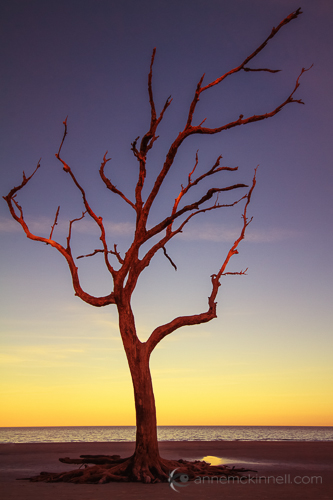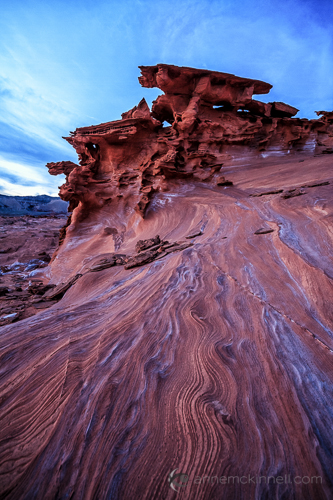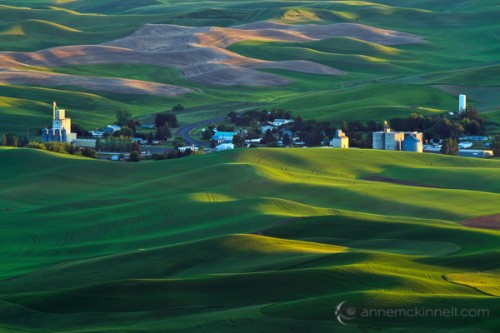4 Essential Ingredients for Great Landscape Photographs
When you are out in the field and you’re not sure if your the image you are making is any good, go through this quick mental checklist to see if your image contains these four essential ingredients.
1. Good Light
Light is by far the most important element of a landscape photograph. A photograph of a stunning location taken in harsh mid-day light will fall flat. A photograph of a boring location taken at that perfect moment when the light is magical will turn into a unique and memorable photograph.
I don’t actually believe that there is any kind of light that is inherently bad. You just have to know what to do with the light conditions that you are given.

The golden hour light of sunrise and sunset are usually a favourite time for photographers. My favourite time is the blue hour: twilight. It’s hard to go wrong with these two types of light.
When you have a day with bright harsh sunlight, take advantage of the opportunity to look for interesting shadows.
The white sky of an overcast day is an excellent time to photograph close-ups.
And what about those stormy days? Those can be the best of all with the dramatic clouds that accompany a storm.
2. Main Subject
The next thing is to make sure you have a main subject. That may sound pretty obvious but keep it in mind. You may find yourself, as I sometimes do, making an image of some general landscape without a clear subject. It’s just some land with some trees and maybe some water. You need to decide what the subject is and that will help you make an image that is more compelling.

When I get to a location I like to think of what it is about that place that grabbed my attention and I make that the main subject. That’s not to say you cannot then turn your attention to another main subject later, but if you have too many subjects in your scene, none of them with be the main subject and your image will be too general to be interesting.
While we’re thinking about the main subject, what is it about that subject that you like? Having descriptive words in your head when you are making an image will help you focus and bring that description into the image. What is it about the lake you like? Is it the reflection? The shape? The peacefulness? How it is so clear you can see the bottom? Not only will this help you convey meaning in your image, but it will help you write about it later.
3. Clean Background
Just as important as the main subject is what is behind it.
Clutter and distracting elements can ruin an otherwise good image. This is where perspective becomes important. You must find an angle to photograph your subject so there are no distracting elements in the background. That can mean getting up high and shooting down on your subject so the background is filled with only one texture, or getting low and shooting upwards so the background is filled with only sky.
Try to isolate your subject and simplify the image as much as possible.

4. Interesting Composition
I like to think of photography as the opposite of painting. Painters start with a blank canvas and start adding things to it, whereas photographers are presented with a scene full of details and must start eliminating things from it until it contains only the most important elements of the scene. Then, those elements must be arranged to create an interesting graphic design.
Remember the building blocks of composition that you can rely on to create interesting graphic designs:
lines
curves
textures
patterns
shapes
colours
frames
The “trick,” if there is one, is to make all four of these things come together. It will take patience, perseverance, and a little luck.



.gif)





